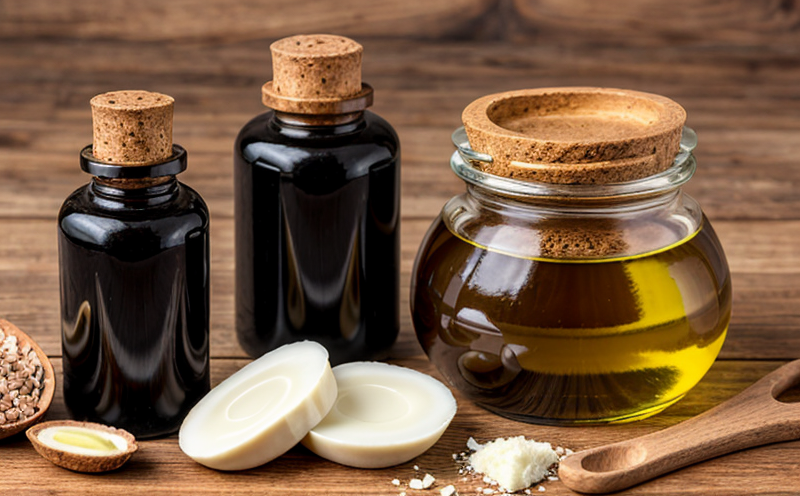AOAC 965.33 Cholesterol Determination in Oils and Fats
The AOAC International method 965.33 is a widely recognized protocol used for the determination of cholesterol content in oils and fats. This procedure is particularly important for ensuring product quality, compliance with regulatory standards, and maintaining consumer safety.
Cholesterol is an essential component found in animal-based products like oils and fats. However, when present at high levels, it can pose health risks to consumers, especially those with specific dietary restrictions or medical conditions. Accurate measurement of cholesterol content is crucial for several reasons:
- Compliance with Regulations: Many countries have strict regulations regarding the maximum allowable cholesterol limits in foods and feeds. This ensures that products meet legal requirements.
- Dietary Control: Consumers, particularly those managing heart diseases or hyperlipidemia, rely on accurate cholesterol measurements to make informed dietary choices.
- Product Quality Assurance: Consistent and reliable measurement of cholesterol content helps in maintaining product quality standards across different batches and production runs.
The AOAC 965.33 method involves several steps, including sample preparation, extraction, and analysis using gas chromatography with flame ionization detection (GC-FID). This method is sensitive and precise, making it suitable for detecting even trace amounts of cholesterol in complex matrices.
Sample preparation is a critical step that ensures accurate results. Typically, oils and fats are dissolved or dispersed in an appropriate solvent before proceeding to the extraction phase. The choice of solvent can vary based on the type of fat or oil being analyzed. Once extracted, the sample undergoes further purification steps to remove interfering substances.
The GC-FID system is then used for final analysis. This technique allows for the separation and quantification of cholesterol within a short time frame. The method's reliability is enhanced by its ability to differentiate between various sterols present in the sample, ensuring that only true cholesterol is measured.
Interpretation of results from AOAC 965.33 involves comparing the obtained values against established reference standards or limits set forth by relevant regulatory bodies such as the FDA (US Food and Drug Administration) or EU directives on food safety.
Understanding the implications of cholesterol content in oils and fats extends beyond mere compliance; it plays a vital role in public health. By accurately measuring cholesterol levels, laboratories like ours contribute significantly to mitigating potential risks associated with high-cholesterol diets while also supporting industries that need reliable data for product development or reformulation.
Applied Standards
The AOAC 965.33 method aligns closely with international standards such as ISO and ASTM, ensuring consistency across different laboratories worldwide. This harmonization is crucial for maintaining uniformity in testing protocols which ultimately leads to more accurate and reliable results.
Specifically designed for fatty matrices, this procedure provides a standardized approach that minimizes variability among samples analyzed by various entities. Compliance with these standards not only enhances credibility but also facilitates easier integration into global supply chains where multiple jurisdictions may have varying requirements.
In addition to its alignment with ISO and ASTM guidelines, the AOAC 965.33 method is endorsed by numerous industry bodies including the American Oil Chemists' Society (AOCS) and European Union regulations related to food safety and nutrition labeling. These endorsements underscore its relevance in both academic research and industrial applications.
By adhering strictly to these recognized protocols, we ensure that our clients receive accurate measurements that are universally accepted by regulatory authorities. This consistency is essential for maintaining product integrity throughout the supply chain from production through distribution until final consumption.
Benefits
Implementing AOAC 965.33 brings numerous benefits to businesses operating within the food and feed industries:
- Precision Measurement: The method offers high precision, providing accurate quantification of cholesterol levels in oils and fats.
- Compliance Assurance: Ensures strict adherence to national and international regulations regarding cholesterol limits.
- Enhanced Product Quality: Consistency in measurement helps maintain consistent product quality across batches, ensuring reliable performance.
- Risk Management: Helps identify potential risks early on by monitoring cholesterol levels regularly.
- Informed Decision Making: Provides detailed insights into the nutritional profile of products aiding better decision-making processes.
Furthermore, this method supports continuous improvement efforts within manufacturing plants by offering valuable feedback on production techniques and raw material sourcing practices. It also aids in meeting consumer expectations regarding transparency and safety concerning cholesterol content in their favorite foods.
Use Cases and Application Examples
The AOAC 965.33 method finds extensive application across various sectors within the food & feed industry:
- Beverage Manufacturers: Ensuring that drinks containing added fats or oils comply with cholesterol content limits.
- Packaged Food Producers: Guaranteeing the accuracy of nutritional labeling for snack items, spreads, and other processed foods.
- R&D Departments: Developing new formulations where precise control over cholesterol levels is necessary.
- Ingredient Suppliers: Verifying that raw materials meet specified cholesterol standards before incorporating them into finished products.
In practice, laboratories specializing in food safety and quality often use AOAC 965.33 for routine testing as part of their quality assurance programs. This ensures that all processed foods destined for retail shelves are safe to consume and meet regulatory standards set by health organizations worldwide.





